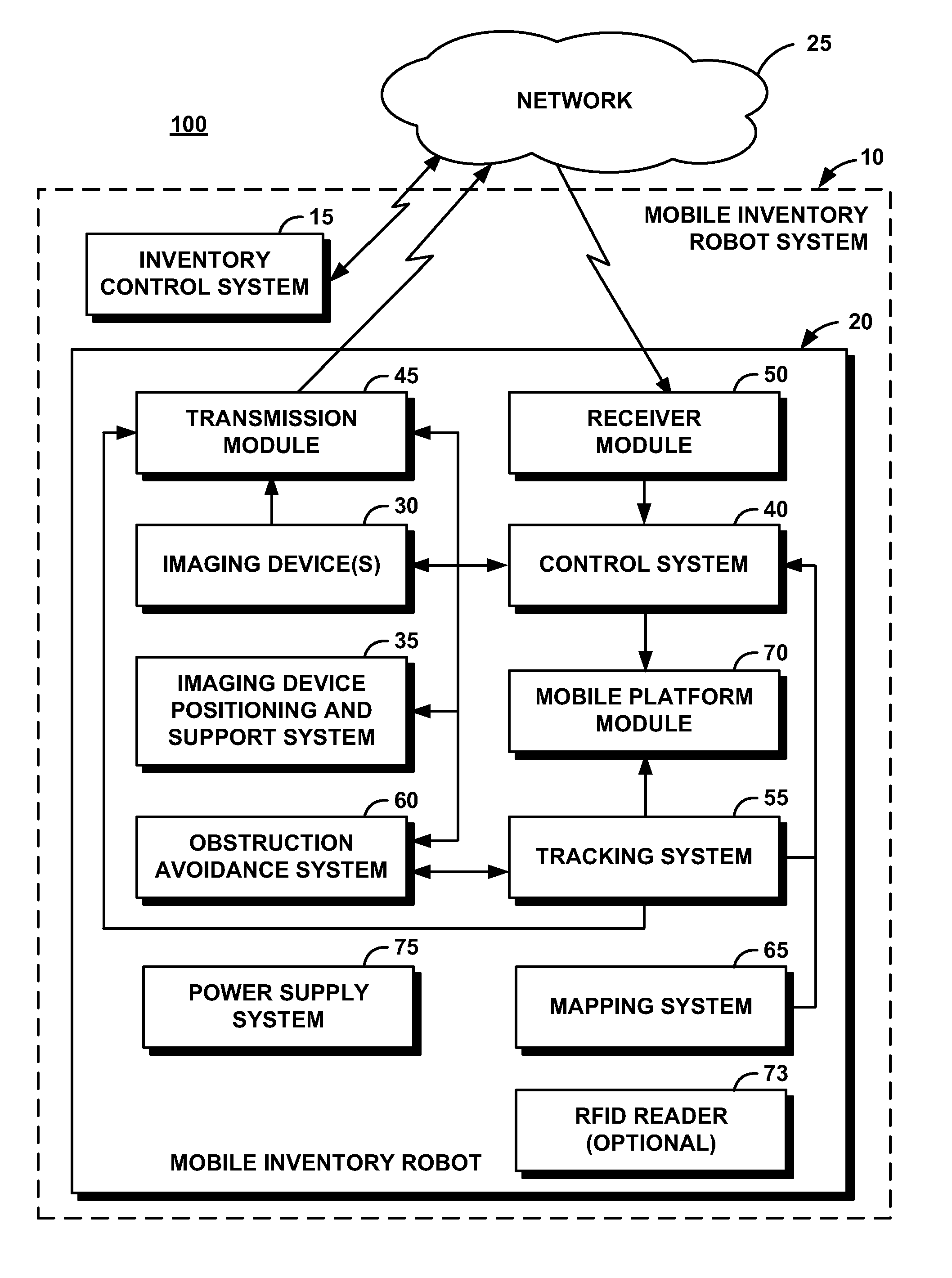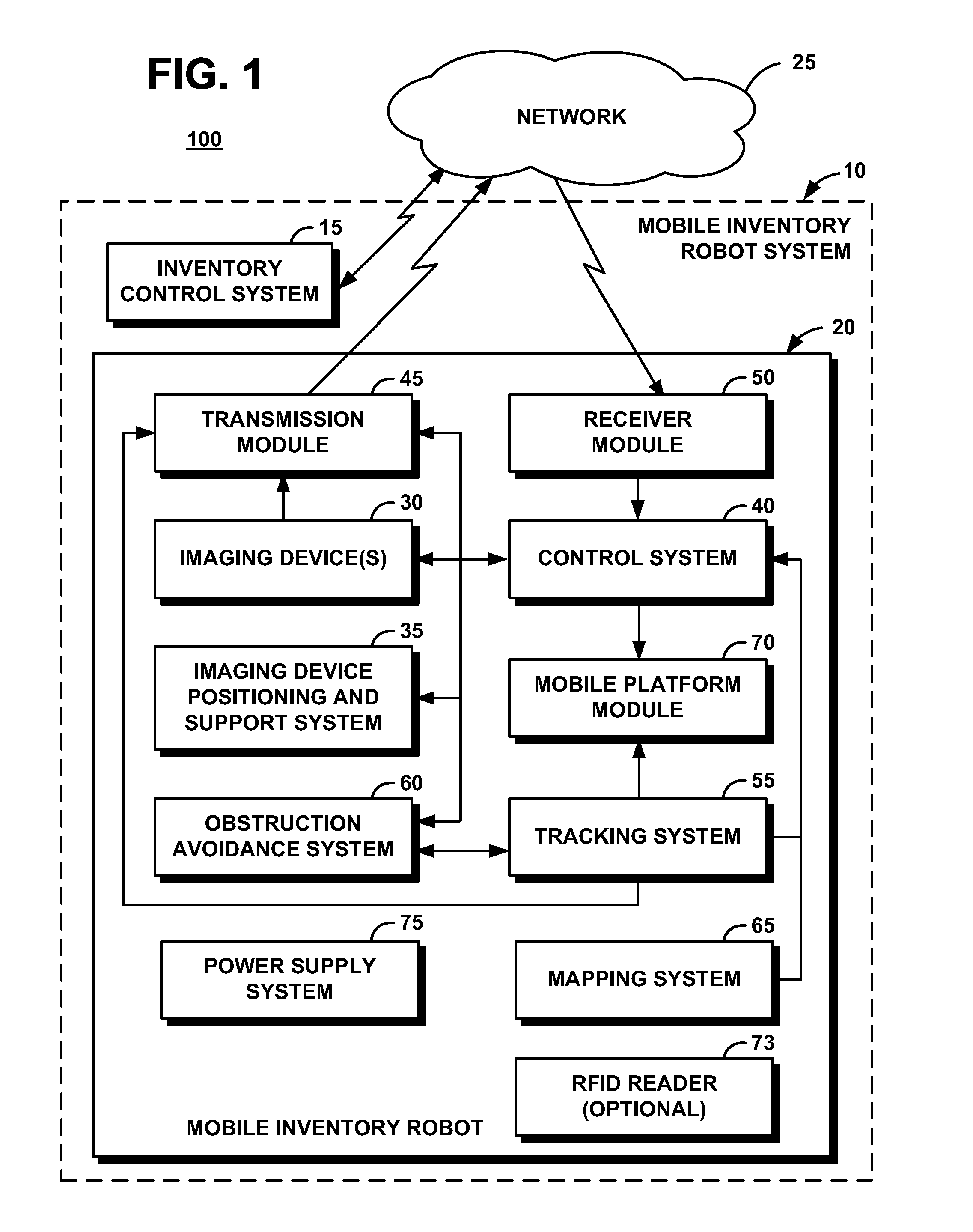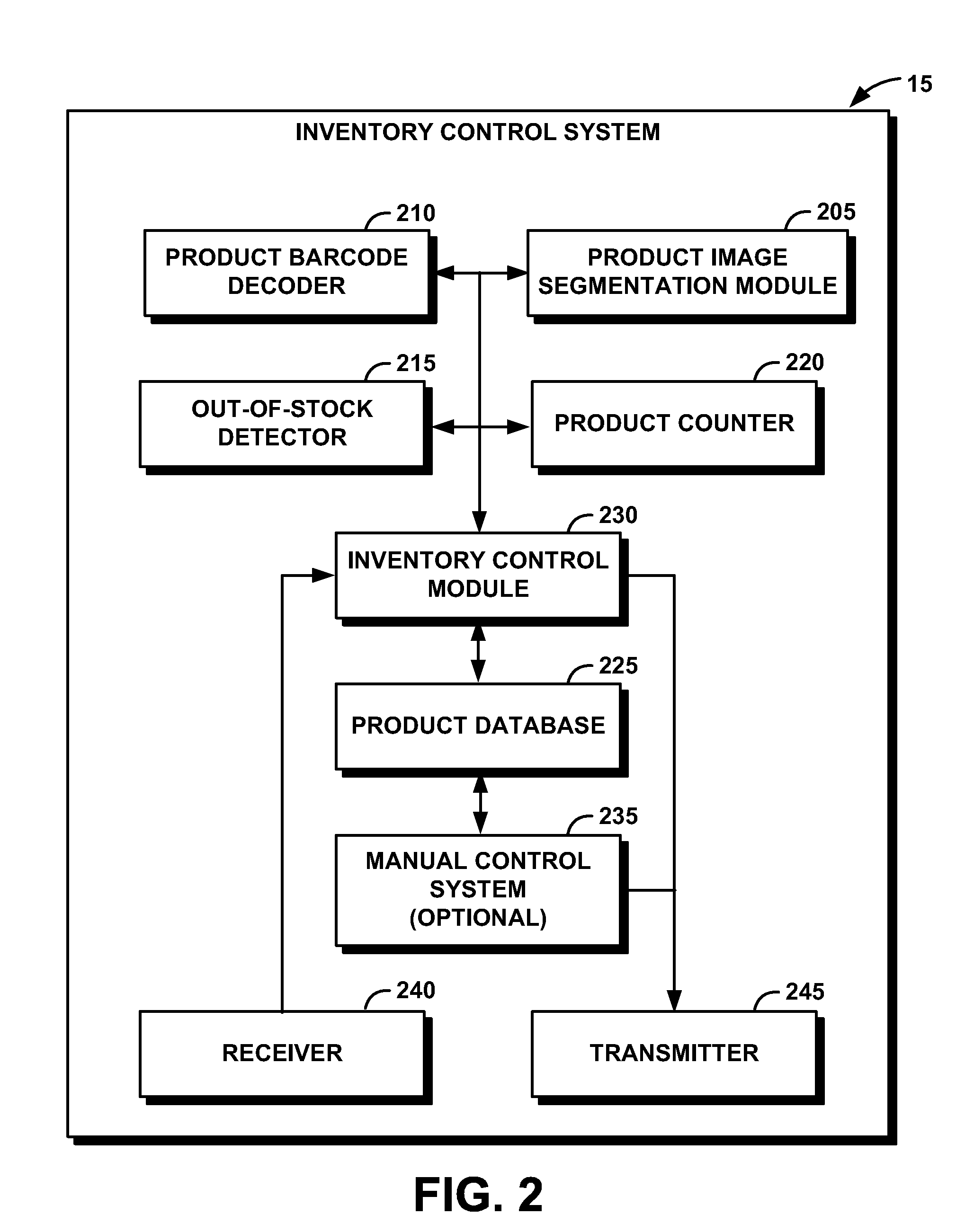System and Method for Performing Inventory Using a Mobile Inventory Robot
- Summary
- Abstract
- Description
- Claims
- Application Information
AI Technical Summary
Benefits of technology
Problems solved by technology
Method used
Image
Examples
Embodiment Construction
[0032]The following definitions and explanations provide background information pertaining to the technical field of the present invention, and are intended to facilitate the understanding of the present invention without limiting its scope:
[0033]Cycle Count: a count of stock in a warehouse or retail store that is used to keep the “available for sale” stock balance accurate. An effective cycle counting system comprises taking a physical inventory of a portion of the stock in the warehouse or retail store each evening. The quantity of each item physically located within the warehouse or on a shelf of the retail store should correspond to on-hand stock stored in the system less the committed stock. Any discrepancies are recorded and adjusted.
[0034]Out of Stock: Not having inventory of an item in a warehouse or retail store.
[0035]Overage: Excess between the inventory determined from the perpetual inventory records and the amount of inventory actually on hand.
[0036]Overstock: Having a h...
PUM
 Login to View More
Login to View More Abstract
Description
Claims
Application Information
 Login to View More
Login to View More - R&D
- Intellectual Property
- Life Sciences
- Materials
- Tech Scout
- Unparalleled Data Quality
- Higher Quality Content
- 60% Fewer Hallucinations
Browse by: Latest US Patents, China's latest patents, Technical Efficacy Thesaurus, Application Domain, Technology Topic, Popular Technical Reports.
© 2025 PatSnap. All rights reserved.Legal|Privacy policy|Modern Slavery Act Transparency Statement|Sitemap|About US| Contact US: help@patsnap.com



